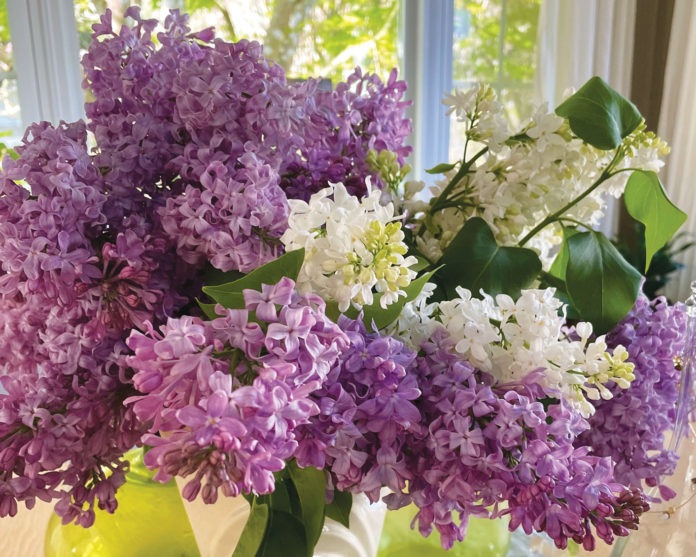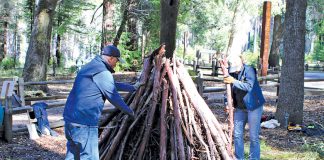
Is everything blooming now fragrant or is it just me? Does Mother Nature have a card up her sleeve to insure pollinators find nectar thereby ensuring plant propagation or is it mostly spring fever on my part? What makes flowers fragrant anyway?
Fragrance in flowers is nature’s way of encouraging pollination. Just as it draws you to take a deeper whiff, it lures insects to blossoms hidden by leaves. Some flowers are fragrant only at night and attract night-flying pollinators like moths, while others are more fragrant during the day and attract insects like bees and butterflies.
The fragrance itself comes from essential oils called attars that vaporize easily and infuse the air with their scents. Aroma chemistry is complex and the smell of any flower comes from more than a single chemical compound. These molecules are present in different combinations in different plants, but often they are markedly similar which is why there are irises that smell like grapes and roses that smell like licorice.
Our noses can detect those chemical compounds that have a major impact on the aroma. Often a particular molecule will make a large contribution. Some roses, for instance, derive their scent from rose oxide and others from beta-damascenome or rose ketones. These molecules are detectable by our noses at very, very low concentrations. Carnations, violets, lilies, chrysanthemums, hyacinth—all have their own set of compounds that contribute to their scent.
It’s interesting also that as we become accustomed to the same smells our brain phases them out. A compound called ionones, found in violets and rose oil, can essentially short-circuit our sense of smell, binding to the receptors. This shutdown is only temporary and the ionones can soon be detected again and registered as a new smell.
The word fragrance comes from the 17th century French word fragrantia, meaning sweet smell. A garden’s fragrance can be as unforgettable as its appearance. The scent of a particular flower can make you remember past times and places. Plant them along a garden path to enjoy as you stroll, in containers to scent a deck or patio or locate them beneath a window and let their aroma drift indoors.
Old fashion lilacs are still blooming in gardens. Nothing says “spring” like the legendary scent of these shrubs. Give them a spot in full sun with enough room for them to spread 6 feet wide. While most plants accept slightly acidic soils, lilacs are an exception. Dig lime into your soil at planting and side dress yearly if your soil is acidic.
Place sweet-smelling plants where you can enjoy them throughout the season. The potency of flower scents varies greatly, so consider the strength of a fragrance when deciding where to put a plant. Subtle fragrances such as sweet pea, lemon verbena, scented geranium and chocolate cosmos smell wonderful right outside the back door. Add stronger scents by your deck, pool, spa, dining area or gazebo. Stargazer lilies, jasmine, lilacs, daphne, citrus and peonies will make you want to stay awhile.
Several easy-to-grow shrubs have fragrant flowers as an added bonus. Mexican Orange (choisya ternata) blooms most of the year. Pittosporum eugenoides, tenuifolium and tobira all have tiny blossoms that smell like oranges. too. The tiny flower cluster of Fragrant Olive (osmanthus fragrans) have a delicate apricot fragrance.
Other fragrant plants include California native Philadelphus lewisii (Wild Mock Orange). Calycanthus occidentals (Spice Bush) is native to our Central and Northern California mountains. Their fragrant burgundy flowers smell like red wine. Ribes viburnifolium, carpenteria californica and rosa californica are mildly scented, too.
In spring there may be nothing quite as spectacular as a wisteria vine, loaded with fragrant purple, pink, blue or white flower clusters, covering an arbor or pergola. Pink jasmine is another vigorous vine with intensely fragrant flowers as is Evergreen Clematis.
Plant for fragrance. It’s your reward for all the care and tending you give your garden.
Jan Nelson, a landscape designer and California-certified nursery professional, will answer questions about gardening in the Santa Cruz Mountains. Email her at ja******@*ol.com, or visit jannelsonlandscapedesign.com.










